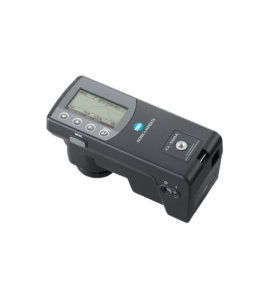DOMINANT WAVELENGTH VS. PEAK WAVELENGTH
DOMINANT WAVELENGTH VERSUS PEAK WAVELENGTH
When using a spectrometer to measure light, there would be two measurement units that look alike: Dominant Wavelength (λdom) and Peak Wavelength (λpeak).
Both of these measurements use the measurement units of nm, and their difference requires a technical explanation.
Peak Wavelength: The peak wavelength is the single wavelength where the radiometric emission spectrum of the light source reaches its maximum. This can be seen when looking at the highest peak of the spectrum graphs.
Dominant Wavelength: A single wavelength perceived by the human eye. λdom is based on the CIE 1931/1976 colour space, and the wavelengths are denoted from the perimeter of the chart. Therefore, λdom could be represented as the hue of the light. In addition, λdom is accompanied by “Purity (%),” which indicates the saturation of the colour.
Measurement Results
As a result, λpeak is a measurement of the absolute peak and can only be measured with a spectrometer. At the same time, λdom can be measured with a colorimeter (filter-based) or spectrometer. Using the example, the measurement of a red LED torch using a spectrometer shows a λpeak of 631nm while the λdom is at 621nm (refer image below). This is caused by the full red LED spectrum not being a sharp vertical line at 631nm. It is in a shape of a bell with a 90nm band starting from about 575-665nm. Hence, the eye’s perceived color (λdom) is 621nm.
 Understanding that λdom is visually correlated, λpeak is still essential for LED manufacturers and incoming QC. In manufacturing, it would be tough to manufacture every red LED to be 630 nm. Hence, manufacturers would sort LEDs by grades based on the λpeak. For incoming QC, λpeak would be used to measure the peak wavelength of the LED to ensure that it matches the requirements.
Understanding that λdom is visually correlated, λpeak is still essential for LED manufacturers and incoming QC. In manufacturing, it would be tough to manufacture every red LED to be 630 nm. Hence, manufacturers would sort LEDs by grades based on the λpeak. For incoming QC, λpeak would be used to measure the peak wavelength of the LED to ensure that it matches the requirements.
What Measurement Solutions are Available?
To ensure the LED colours remain consistent batch-to-batch, manufacturers are adopting spectrometers for end-of-line testing or lab measurement. Konica Minolta’s next generation of portable Illuminance Spectrophotometer CL-500A enables lux, colour, CRI, CCT, and spectrum measurement all in one instrument.
 Spectrophotometer CL-500A is an industrial-grade instruments equipment complying with JIS & DIN standards. With low spectra response characteristics (f1’) value and high wavelength precision, it is ideal for the quality management of LED lights. Furthermore, the added PPFD index is also suitable for horticultural applications.
Spectrophotometer CL-500A is an industrial-grade instruments equipment complying with JIS & DIN standards. With low spectra response characteristics (f1’) value and high wavelength precision, it is ideal for the quality management of LED lights. Furthermore, the added PPFD index is also suitable for horticultural applications.
Contact us for a free consultation with our application specialists and let us assist you with your lights and colour measurement needs.
